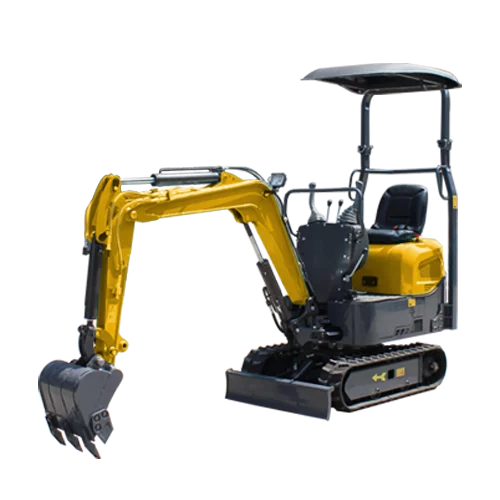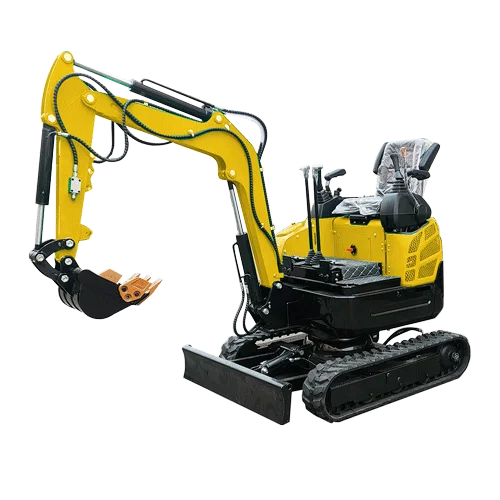Bienvenue sur mon blog !
Avant de plonger dans le contenu, j'aimerais que vous me rejoigniez sur mes plateformes de médias sociaux où je partage plus d'informations, je m'engage avec la communauté et je publie des mises à jour. Voici comment vous pouvez vous connecter avec moi :
Facebook:https://www.facebook.com/profile.php?id=100087112105480
LinkedIn:https://www.linkedin.com/showcase/99327366/admin/dashboard/
Maintenant, commençons notre voyage ensemble. J'espère que vous trouverez le contenu de ce site perspicace, intéressant et utile.
Table des matières
Introduction

Small excavators, also known as mini excavators or compact excavators, have revolutionized construction, landscaping, and utility work. Their compact size and versatility make them ideal for navigating tight spaces and performing a wide range of tasks. However, with various small excavator sizes available, selecting the right one for your specific needs is crucial. This comprehensive guide will delve into the factors to consider when choosing small excavator sizes, ensuring you make an informed decision for your projects.
Understanding the Importance of Choosing the Right Small Excavator Sizes
Choosing the right small excavator size is paramount for several reasons:
- Efficacité : A properly sized excavator optimizes productivity. A machine that’s too small may struggle with demanding tasks, while one that’s too large may be cumbersome and inefficient in confined spaces.
- Rapport coût-efficacité : Selecting the appropriate size minimizes operational costs. A smaller excavator generally consumes less fuel and has lower maintenance expenses.
- La sécurité : Using a correctly sized excavator enhances safety on the job site. It reduces the risk of accidents caused by instability or maneuvering limitations.
- Polyvalence : Choosing the right size allows you to maximize the machine’s versatility, enabling it to handle a wider array of tasks.
Key Factors to Consider When Choosing Small Excavator Size


Several crucial factors come into play when determining the ideal small excavator sizesfor your projects:
Job Site Conditions and Small Excavator Size
The characteristics of your job site significantly influence the appropriate excavator size. Consider the following:
- Space Constraints: If you’re working in confined areas, such as urban construction sites or residential backyards, smaller excavator sizes are essential for maneuverability.
- Terrain: The type of terrain affects stability and traction. Uneven or sloped terrain may require a larger excavator with a wider track gauge for enhanced stability.
- Access: Consider how the excavator will access the job site. Narrow gates or pathways may restrict the size of the machine.
Task Requirements and Small Excavator Size
The nature of the tasks you’ll be performing dictates the necessary excavator size:
- Digging Depth and Reach: If you need to dig deep trenches or reach extended distances, a larger excavator with greater digging depth and reach is necessary.
- Lifting Capacity: If you’ll be lifting heavy objects, ensure the excavator has sufficient lifting capacity.
- Compatibilité d'attachement : Consider the types of attachments you’ll be using, such as buckets, breakers, or augers. Ensure the excavator is compatible with these attachments.
Weight and Transportation of Small Excavator Size
The weight of the excavator impacts transportation and ground pressure:
- Transportation: Ensure you have the appropriate transportation equipment to move the excavator to and from the job site.
- Ground Pressure: Consider the ground pressure of the excavator, especially if working on sensitive surfaces. Smaller excavator sizes generally exert less ground pressure.
Comprendre Small Excavator Sizes and Classes
Small excavators are typically categorized by their operating weight, which ranges from under 1 ton to around 10 tons. Here’s a breakdown of common small excavator sizes and their applications:
Micro Excavators (Under 1 Ton)
- Ideal for indoor demolition, landscaping in tight spaces, and utility work in confined areas.
- Excellent maneuverability and minimal ground pressure.
Mini Excavators (1-6 Tons)
- Versatile machines suitable for a wide range of tasks, including digging trenches, excavating foundations, and landscaping.
- Offer a balance of power and maneuverability.
Compact Excavators (6-10 Tons)
- Suitable for larger-scale projects, such as road construction, site preparation, and demolition.
- Provide increased digging depth, reach, and lifting capacity.
Small Excavator Sizes Comparison Table
To help you visualize the different small excavator sizes and their typical specifications, here’s a comparison table:
| Fonctionnalité | Micro Excavator (Under 1 Ton) | Mini Excavator (1-3 Tons) | Mini Excavator (3-6 Tons) | Compact Excavator (6-10 Tons) |
|---|---|---|---|---|
| Poids en ordre de marche | < 1 ton | 1-3 tons | 3-6 tons | 6-10 tons |
| Profondeur de fouille | Up to 6 ft | 6-10 ft | 10-15 ft | 15-20 ft |
| Reach | Up to 8 ft | 8-12 ft | 12-18 ft | 18-25 ft |
| Applications typiques | Indoor demolition, landscaping, utility work | Trenching, landscaping, small construction | Excavation, site preparation, utility installation | Road construction, demolition, larger excavations |
| Transportabilité | Easy (trailer or pickup truck) | Trailer required | Trailer required | Heavy-duty trailer required |
Choosing the Right Small Excavator Sizes for Specific Applications
Let’s explore how small excavator sizes relate to specific applications:
Small Excavator Sizes for Landscaping
For landscaping projects, mini excavators (1-3 tons) are often ideal. They offer sufficient power for digging, grading, and moving materials while being maneuverable enough for residential properties.
Small Excavator Sizes for Utility Work
Utility work, such as installing pipes or cables, often requires navigating tight spaces. Micro excavators or smaller mini excavators are well-suited for these applications.
Small Excavator Sizes for Construction
Construction projects may require a range of small excavator sizes depending on the scale of the work. Mini excavators (3-6 tons) or compact excavators may be necessary for larger excavations or demolition tasks.
Maintenance and Operating Considerations for Small Excavator Sizes

Proper maintenance and operation are crucial for maximizing the lifespan and performance of your small excavator:
Regular Maintenance for Small Excavators
- Regularly check fluid levels (engine oil, hydraulic fluid, coolant).
- Inspect and lubricate moving parts.
- Check and replace filters as needed.
- Inspect tracks or tires for wear and tear.
Safe Operation of Small Excavators
- Always wear appropriate safety gear.
- Operate the excavator on stable ground.
- Be aware of overhead and underground utilities.
- Follow the manufacturer’s operating instructions.
Conclusion
Choisir le bon small excavator sizes is a critical decision that impacts project efficiency, cost-effectiveness, and safety. By carefully considering the factors discussed in this guide, you can confidently select the ideal machine for your specific needs. Remember to assess job site conditions, task requirements, weight and transportation considerations, and the different size classes of small excavators. Proper maintenance and safe operation will ensure your excavator performs optimally for years to come.
FAQ
What is the most versatile small excavator size?
Mini excavators in the 1-3 ton range are often considered the most versatile, offering a good balance of power and maneuverability.
What are the main benefits of using a small excavator?
The main benefits include maneuverability in tight spaces, versatility for various tasks, and lower operating costs compared to larger excavators.
Comment maintenir une small excavator?
Regular maintenance includes checking fluid levels, lubricating moving parts, replacing filters, and inspecting tracks or tires.
What safety precautions should I take when operating a small excavator?
Always wear appropriate safety gear, operate on stable ground, be aware of utilities, and follow the manufacturer’s operating instructions.
